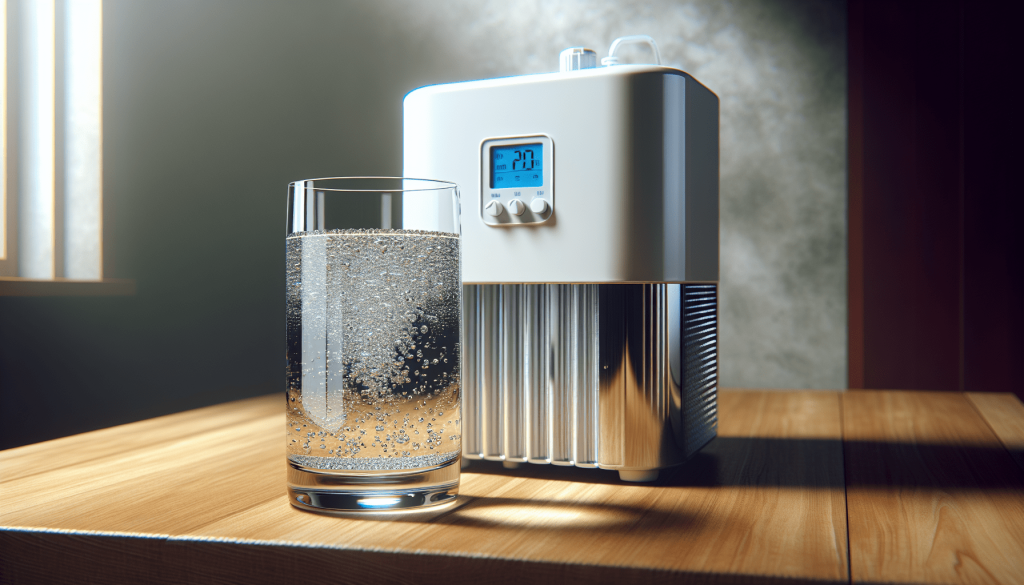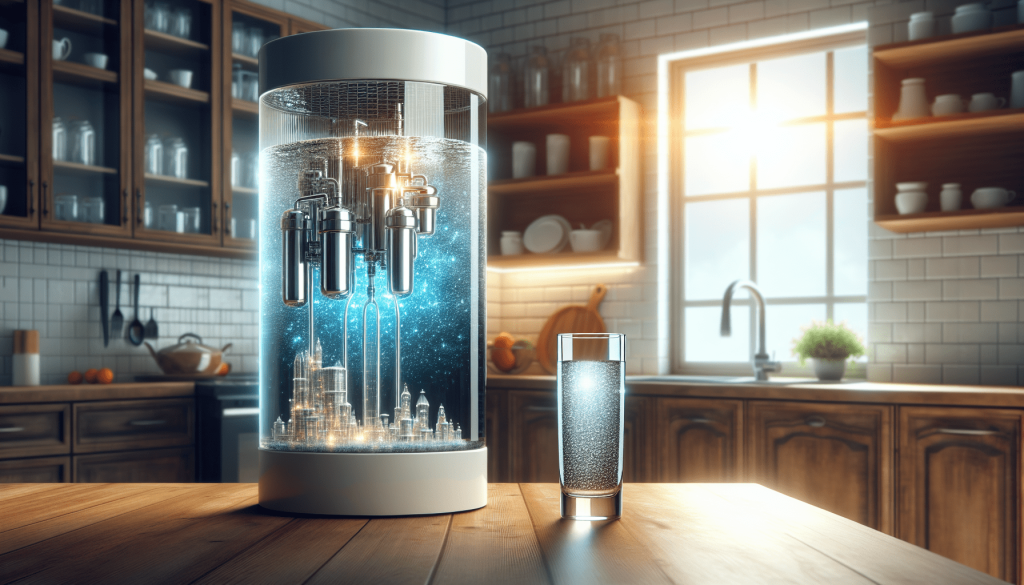In the world of household appliances, one often overlooked but crucial device is the water softener. It’s responsible for ensuring that the water flowing through your taps is free from minerals and impurities that can wreak havoc on your pipes and appliances. But just like any other machine, a water softener has a finite lifespan. So, the question arises: how often do you need to replace your water softener? In this article, we will explore the factors that influence the lifespan of a water softener and provide you with insights to help you determine when it’s time for a replacement.

Factors Affecting Water Softener Lifespan
Water Hardness
The hardness of your water can have a significant impact on the lifespan of your water softener. Hard water contains high levels of minerals, such as calcium and magnesium, which can build up in the system over time. The more minerals present in your water, the faster the resin in the water softener will become saturated, reducing its effectiveness and lifespan.
Water Usage
The amount of water you use in your household also affects the lifespan of your water softener. If you have a high water usage, your water softener will have to work harder and regenerate more frequently to keep up with the demand. This increased usage can put additional strain on the system, potentially shortening its lifespan.
Salt Usage
Salt is an essential component of salt-based water softeners, as it helps regenerate the resin bed. The amount of salt you use and the frequency of salt refills can impact the lifespan of your water softener. Using too little salt can lead to ineffective regeneration and decreased lifespan, while using too much salt can cause salt bridges and impact the performance of the system.
Quality of the Water Softener
The quality of the water softener itself plays a crucial role in its lifespan. Choosing a reputable brand and investing in a high-quality water softener can significantly increase its longevity. A well-constructed and durable system is more likely to withstand wear and tear over time, resulting in a longer lifespan.
Maintenance and Cleaning
Proper maintenance and regular cleaning are essential for maintaining the lifespan of your water softener. Neglecting routine maintenance tasks, such as cleaning the brine tank and inspecting the control valve, can lead to issues and premature failure. By following a recommended maintenance schedule, you can extend the lifespan of your water softener.
Average Lifespan of Water Softeners
Resin-Based Water Softeners
Resin-based water softeners, also known as ion exchange water softeners, typically have an average lifespan of about 20 to 25 years. The resin bed in these systems can become exhausted over time and may need to be replaced to restore the softening effectiveness. However, with proper maintenance, resin-based water softeners can last even longer.
Salt-Based Water Softeners
Salt-based water softeners, which use a brine tank and resin bed, generally have an average lifespan of 15 to 20 years. Over time, the resin bed may become fouled or worn out, requiring replacement. Regular cleaning of the brine tank and proper salt usage can help prolong the lifespan of a salt-based water softener.
Magnetic Water Softeners
Magnetic water softeners, also known as magnetic descalers, are a non-chemical alternative to traditional water softeners. These devices use magnets to alter the structure of minerals in the water, reducing their ability to cause hardness. The average lifespan of magnetic water softeners varies, but with proper maintenance, they can last up to 15 years or more.
Electronic Water Descalers
Electronic water descalers, also called electronic water conditioners, use electromagnetic waves to treat the water and reduce scale buildup. These devices typically have a lifespan of around 10 to 15 years. Regular maintenance, such as cleaning the electrodes, is crucial to ensuring optimal performance and extending the lifespan of electronic water descalers.
Signs That Your Water Softener Needs Replacement
Decrease in Water Softness
One of the first signs that your water softener may need replacement is a decrease in the softness of your water. If you notice that your water feels harder or soap doesn’t lather as well as before, it may be an indication that the resin bed is no longer effectively removing minerals from the water.
Decreased Water Pressure
A decline in water pressure throughout your household can also signal a problem with your water softener. As the resin bed becomes clogged or worn out, it can restrict water flow, resulting in decreased water pressure from your faucets and showerheads. If you’ve ruled out other potential causes for low water pressure, it may be time to consider replacing your water softener.
Increased Salt Usage
If you find yourself refilling the salt in your water softener more frequently than usual, it could be a sign that the system is struggling to regenerate properly. Inefficient regeneration can be caused by a variety of factors, from worn-out resin to malfunctioning control valves. If you notice a significant increase in salt usage, it’s worth investigating the issue further and considering replacement.
Leakages and Water Wastage
Any signs of leaks or water wastage associated with your water softener should not be ignored. Leaks can occur due to worn-out seals, cracked tanks, or faulty valves. Not only can leaks lead to water damage, but they can also indicate a more significant problem with the system that may require replacement.
Frequent Maintenance Issues
If you find yourself constantly dealing with maintenance issues, such as recurring clogs, frequent resin replacement, or ongoing repairs, it may be time to replace your water softener. While occasional maintenance is normal, excessive and recurring issues can be a sign of a system nearing the end of its lifespan. In such cases, investing in a new water softener can save you time, money, and frustration in the long run.
Replacing Water Softener Components
Resin Replacement
Over time, the resin bed in a water softener can become exhausted or fouled, diminishing its softening effectiveness. If you’re experiencing a decrease in water softness or increased salt usage, it may be necessary to replace the resin. This process typically involves disconnecting the tank, removing the old resin, and installing new resin in the tank.
Brine Tank Maintenance
The brine tank is an essential component of salt-based water softeners, as it holds the salt and brine solution necessary for regeneration. Regular maintenance of the brine tank involves cleaning out any salt mush or residue, inspecting and replacing the brine valve if necessary, and ensuring proper salt levels. Following a recommended maintenance schedule can help prevent issues and extend the lifespan of your water softener.
Control Valve Replacement
The control valve, also known as the control head or control unit, is responsible for regulating the flow of water and initiating the regeneration process in a water softener. If you’re experiencing issues with water flow, inefficient regeneration, or other control valve-related problems, it may be necessary to replace the control valve. This process typically involves disconnecting the valve, removing the old unit, and installing a new control valve.

Recommended Maintenance Schedule
Regular Inspection
It’s essential to regularly inspect your water softener for any signs of wear, leaks, or performance issues. This includes checking for salt bridges, inspecting the resin bed for fouling, and ensuring the control valve is functioning correctly. Performing a visual inspection at least once a month can help catch potential problems early and prevent more significant issues down the line.
Resin Cleaning
Cleaning the resin bed is a crucial maintenance task for resin-based and salt-based water softeners. Over time, the resin bed can become fouled with iron, sediment, and other contaminants, impacting its softening effectiveness. Regular resin cleaning involves using a specialized resin cleaner or salt mixture to backwash and regenerate the resin bed, removing accumulated impurities.
Adding Salt
Regularly adding salt to your brine tank is necessary for the regeneration process of salt-based water softeners. The frequency of salt refills depends on the size of your tank, water usage, and the hardness of your water. It’s important not to overload the tank with salt or let the salt levels drop too low. Following the manufacturer’s recommendations and checking salt levels regularly will help maintain optimal performance.
Control Valve Cleaning
Cleaning the control valve is crucial for ensuring proper water flow and efficient regeneration. Over time, the control valve can become clogged or affected by mineral buildup. Regular cleaning involves removing the control valve, checking and cleaning the inlet and outlet screens, and ensuring all components are free from blockages or debris.
Brine Tank Cleaning
Cleaning the brine tank is necessary to prevent salt mush or residue buildup and ensure the proper functioning of your water softener. To clean the brine tank, it’s important to empty the tank, remove any excess salt, and scrub the tank’s interior with a mild detergent or cleaner. After cleaning, rinse the tank thoroughly before refilling it with salt and water.
Annual Professional Servicing
While regular DIY maintenance is important, it’s also recommended to schedule annual professional servicing for your water softener. A professional technician can perform a more thorough inspection, clean hard-to-reach components, and detect any potential issues that may require attention. Professional servicing ensures that your water softener is operating at its best and can help prolong its lifespan.
Factors to Consider When Deciding Replacement
Cost of Replacement
The cost of replacing a water softener is an important factor to consider. It’s essential to weigh the upfront cost of purchasing a new system against the potential long-term cost savings in terms of maintenance, repairs, and improved water quality. Additionally, considering the return on investment and the lifespan of the new water softener can help make an informed decision.
Repair Costs
Before deciding to replace your water softener, it’s worth considering the potential repair costs. If the repairs needed are extensive or expensive, it may be more cost-effective to invest in a new water softener instead. Carrying out a cost analysis and consulting a professional can help determine whether repair or replacement is the best course of action.
Age of Water Softener
The age of your water softener is an important consideration when evaluating whether replacement is necessary. As water softeners age, their performance and efficiency can decline. If your water softener is nearing or surpassing its average lifespan, it may be wise to replace it to avoid potential breakdowns and costly repairs.
Effectiveness of Softening
If you find that your water softener is no longer effectively softening your water, even after maintenance and repair attempts, it may be time for a replacement. The primary purpose of a water softener is to remove hardness-causing minerals from your water, and if it fails to do so adequately, it may be more practical to invest in a new, more efficient system.
Availability of Spare Parts
If your water softener is an older or less common model, finding spare parts for repairs may become increasingly difficult over time. It’s important to consider the availability of spare parts and the potential impact on repair costs and system maintenance. If spare parts are scarce or expensive, replacing the water softener could be a more viable option.

Choosing a New Water Softener
Type of Water Softener
When choosing a new water softener, you’ll need to consider the type that best suits your needs. The different types include resin-based, salt-based, magnetic, and electronic water softeners. Each type has its pros and cons, so it’s important to research and determine which one aligns with your preferences and requirements.
Water Softening Capacity
The water softening capacity of a water softener refers to its ability to remove minerals and soften water. Consider the hardness of your water and the expected water usage in your household when choosing a water softener with the appropriate capacity. Ensuring that the water softener can sufficiently meet your needs is essential for optimal performance and longevity.
Regeneration Frequency
Regeneration is the process of the water softener refreshing the resin bed by flushing out collected minerals. The regeneration frequency varies depending on the type and size of the water softener, as well as water usage. It’s important to choose a water softener that aligns with your household’s water usage and can regenerate as needed without excessive wear and increased salt usage.
Power Source
Some water softeners require a power source to operate, while others can function without electricity. Consider the availability of power outlets and your energy consumption preferences when choosing a water softener. Electricity-dependent water softeners may be more efficient, but they can also contribute to higher energy costs.
Brand and Reputation
Selecting a reputable brand with a proven track record is important when choosing a water softener. Research customer reviews, compare brands, and seek recommendations from professionals to ensure that you’re investing in a reliable and durable system. A well-established brand is more likely to provide reliable products and excellent customer support.
Warranty
The warranty offered by the manufacturer is an important factor to consider when choosing a new water softener. A more extended and comprehensive warranty can provide peace of mind and protection against potential defects or issues. It’s important to carefully read and understand the terms and conditions of the warranty to make an informed decision.
Proper Water Softener Maintenance Tips
Regular Salt Refills
To maintain optimal performance, it’s crucial to regularly refill the salt in your water softener’s brine tank. Check salt levels at least once a month and ensure that the tank always has an adequate amount of salt. Follow the manufacturer’s recommendations regarding the type and amount of salt to use.
Resin Cleaning
Regular resin cleaning is essential for maintaining the effectiveness of your water softener. Follow the recommended resin cleaning schedule and use specialized resin cleaners or salt mixtures to backwash and regenerate the resin bed. This process will help remove accumulated contaminants and prevent fouling.
Cleaning the Brine Tank
Cleaning the brine tank periodically is necessary to prevent salt mush or residue buildup and ensure proper system function. Empty the tank, remove any remaining salt, and scrub the tank’s interior using a mild detergent or cleaner. Rinse the tank thoroughly before refilling it with salt and water.
Inspecting and Cleaning the Control Valve
Regularly inspect and clean the control valve to ensure proper water flow and efficient regeneration. Remove the control valve and check the inlet and outlet screens for blockages or mineral buildup. Clean the screens and any other components that may be affected by debris or contaminants.
Avoiding Overloading
Avoid overloading the brine tank with salt, as excessive salt levels can lead to salt bridges and inefficient regeneration. Follow the manufacturer’s recommendations for salt usage and make sure to maintain appropriate salt levels without exceeding the tank’s capacity.

Common Water Softener Problems and Solutions
Salt Bridges
Salt bridges occur when a hard crust forms in the brine tank, preventing the salt from dissolving properly and regenerating the resin. To remedy salt bridges, gently break up the crust using a broom handle or other suitable tool. Remove the loose salt and debris, and ensure that the salt is free-flowing and covers the water in the tank.
Resin Fouling
Resin fouling refers to the accumulation of impurities, such as iron or sediment, on the resin bed. This can reduce the effectiveness of the water softener and lead to decreased water softness. Performing regular resin cleaning and using resin cleaners or salt mixtures can help prevent and remove resin fouling.
Valve Motor Failure
If the control valve’s motor fails or malfunctions, it can disrupt the water softener’s regular operation and regeneration cycles. In such cases, it may be necessary to replace the valve motor. Contact a professional technician to diagnose the issue and carry out the necessary repairs or replacements.
Leaks and Seal Damage
Leaks can occur in various parts of a water softener, including the tank, control valve, and fittings. Faulty seals or cracked components can cause leaks and lead to water wastage and potential damage. If you detect a leak, it’s important to address it promptly by replacing damaged seals or components as needed.
Clogs and Blockages
Clogs and blockages can occur in the control valve, brine tank, or other parts of the water softener. These can inhibit water flow and proper operation of the system. Regular cleaning and maintenance, as well as avoiding overloading the tank with salt, can help prevent clogs and blockages.
Benefits of Regular Water Softener Replacement
Improved Water Quality
Regularly replacing your water softener helps ensure that your water remains consistently soft and free from minerals that can cause hardness. Enjoying soft water has numerous benefits, including smoother skin, softer hair, reduced soap scum and limescale buildup, and cleaner dishes and laundry.
Decreased Energy Usage
Using a properly functioning water softener can lead to decreased energy usage in your household. Softened water requires less energy to heat, resulting in lower energy bills. Additionally, by reducing limescale buildup in your pipes and appliances, your water heater and other devices can operate more efficiently, further contributing to energy savings.
Extended Lifespan of Plumbing Appliances
Hard water can cause scale buildup in your plumbing appliances, leading to decreased efficiency and potentially shorter lifespans. By regularly replacing your water softener and enjoying the benefits of soft water, you can help extend the lifespan of your appliances, such as water heaters, dishwashers, washing machines, and coffee makers.
Lower Maintenance and Repair Costs
Regularly replacing your water softener can result in lower maintenance and repair costs in the long run. Newer systems are less likely to experience frequent breakdowns and require costly repairs or replacements of parts. By investing in a high-quality and reliable water softener, you can enjoy the peace of mind of having a system that operates efficiently and smoothly.
Reduced Scale Buildup
One of the primary advantages of using a water softener is the reduction in scale buildup on your plumbing fixtures and surfaces. By regularly replacing your water softener and maintaining optimal performance, you can keep scale buildup to a minimum. This not only makes cleaning easier but also prolongs the lifespan of your fixtures and surfaces.



